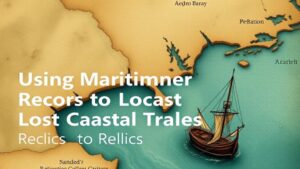From Folklore to Facts: Using Historical Societies to Validate Treasure Legends
From Folklore to Facts: Using Historical Societies to Validate Treasure Legends
The allure of treasure legends has captivated the imaginations of many across generations. These narratives often blend history and mythology, compelling treasure hunters and historians alike to seek the truth behind the tales. But, the transition from folklore to verifiable facts requires a systematic approach that includes the collaboration of historical societies, archival research, and archaeological verification. This article examines how historical societies have played a vital role in validating treasure legends through documented evidence and community engagement.
Understanding Treasure Legends
Treasure legends are stories that have circulated for centuries, often involving hidden riches, lost artifacts, or buried fortunes. They frequently originate from real historical events but become embellished over time. For example, the narrative surrounding Captain Kidd, an infamous pirate of the late 17th century, indicates he buried a substantial treasure on Oak Island, Nova Scotia. This claim has spurred numerous excavations, yet concrete evidence remains elusive.
The Role of Historical Societies
Historical societies serve as custodians of local and regional history, making them essential in investigating and validating treasure legends. Their efforts typically involve:
- Archival research to unearth primary source documents.
- Publications of local histories and folklore.
- Engagement with the community to gather oral histories.
- Collaboration with archaeologists and researchers to conduct field studies.
The importance of these activities cannot be overstated. By providing a well-documented foundation, historical societies help distinguish fact from fiction in treasure legends.
Case Studies of Successful Validation
Several case studies illustrate how historical societies have successfully validated treasure legends:
The Oak Island Mystery
The mystery of Oak Island dates back to 1795 when a group of teenagers discovered a seemingly man-made hole. Over the years, numerous excavations have been conducted, backed by local historical societies. The Nova Scotia Archaeological Society, for example, has actively collaborated with research teams. Although definitive evidence of treasure remains unverified, the society has documented several artifacts, suggesting that the area indeed holds historical significance beyond mere legend.
La Chasse au Trésor in France
In France, the legend of the buried treasure of King Henri IV has attracted intense scrutiny. Historical societies, such as the Société Historique et Archéologique de LAveyron, have engaged in extensive research, uncovering records that indicate Henri IVs wealth was often transported through the region during wars. Their investigations have resulted in archaeological digs that uncovered period-era coins and relics, validating portions of the legend and illuminating aspects of the societal context at the time.
Limitations and Challenges
Despite the fruitful collaboration between historical societies and treasure hunters, several challenges persist:
- Access to archival materials may be limited due to licensing restrictions.
- The accuracy of oral histories can diminish over time.
- Funding for archaeological research may be scarce.
Also, the sensationalism associated with treasure hunting can detract from the legitimate academic pursuit of historical truths. It is essential for both historians and treasure seekers to approach legends with skepticism and rigorous methodologies.
Methodologies for Verification
To navigate the complexities of validating treasure legends, historical societies employ several methodologies:
- Documentary Analysis: Reviewing historical documents, such as land grants, wills, and maps, to establish the context of treasure legends.
- Oral History Collection: Conducting interviews with local residents who may have inherited tales or have personal anecdotes related to the treasure legends.
- Multi-disciplinary Approach: Collaborating with archaeologists, geologists, and historians to provide a comprehensive understanding of the locales history and geological features.
Conclusion and Implications
The journey from folklore to evidence-backed facts concerning treasure legends is complex yet rewarding. Through diligent research and community involvement, historical societies not only preserve local heritage but also contribute to a deeper understanding of cultural narratives. As demonstrated in the cases of Oak Island and La Chasse au Trésor, the pursuit of truth can reconcile myth with history, ultimately leading to the enrichment of our cultural landscapes.
Actionable Takeaways
For enthusiasts and historians alike, the following steps can be taken to further explore and validate treasure legends:
- Connect with local historical societies to access archival materials.
- Engage with community stories, focusing on oral histories related to treasure legends.
- Collaborate with researchers for archaeological digs while ensuring appropriate permits and ethical considerations are met.
By adopting such an approach, individuals can contribute to the academic inquiry surrounding treasure legends, transforming tales of riches into validated narratives that enrich our historical understanding.


